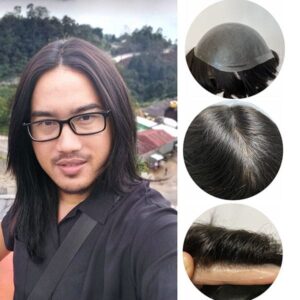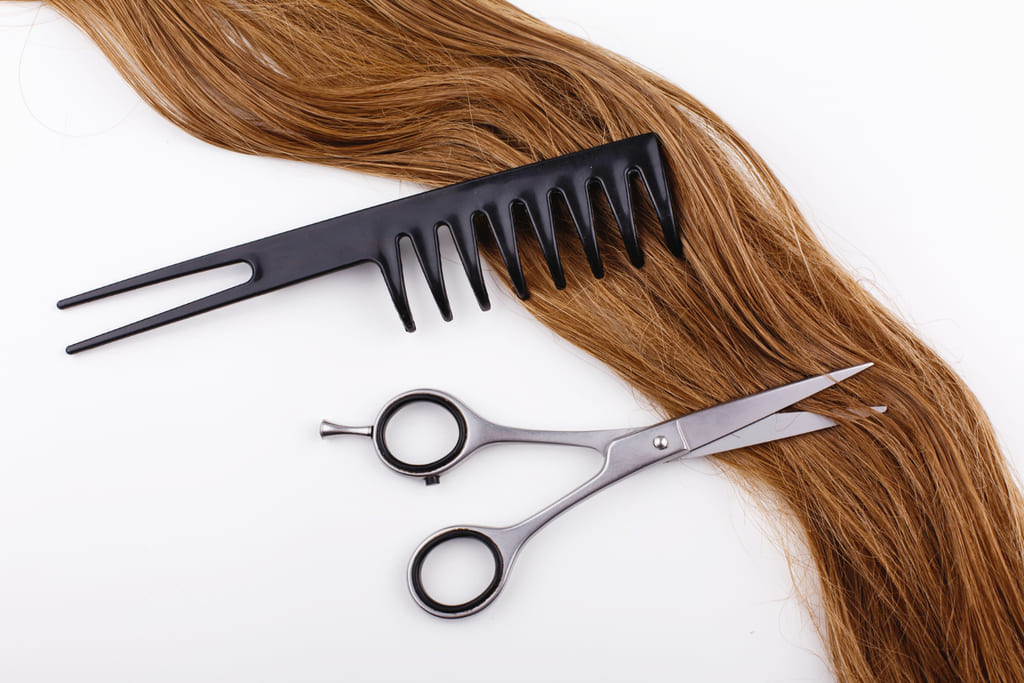
FUE vs FUT Hair Transplant: Which Transplant Surgery is Best?
Have you ever seen our catalogue?
Hair loss is a problem that affects many people in general, and 40% if we talk about men in particular, although women are not immune either. This does not mean that the issue should be let go, as it is a phenomenon that causes significant inconvenience, so a solution that resolves the damage or that, at least, contains it, is diligently sought.
Today there are medications, lotions and specially designed products that, however, do not guarantee great results. On the contrary, the transplant can be satisfactory from an aesthetic point of view. Next, we will see in detail all the information about FUE vs FUT hair transplant, two of the most widely used techniques, and we will discover what they consist of and other important questions about them.
What is FUE transplant?
The first of the two most popular techniques is Follicular Unit Extraction, commonly called FUE, which involves a direct extraction of the follicles.
This is a method that was already popular 25 years ago in Europe, as a natural evolution of the punch technique. However, it was soon put aside, due to the rise of the FUT technique, which we will talk about shortly. However, the technological developments that have occurred in recent years have made it possible to implement many improvements, and thus the FUE technique has been recovered and renewed, ready to be used again by the public of men and women who need a solution for their alopecia.
On a more practical level, this approach involves taking the individual follicles directly from the donor area (which is previously completely shaved) using an extremely small circular scalpel, but very similar in shape to the one originally used.
These extractions can be done by hand, or even using a motorized rotary system. The difficulty of this procedure lies in the fact that the procedure is done practically blindly, since depending on the thickness of the scalp it is not always possible to completely remove the follicle, also running the risk of damaging this unit or those adjacent to the area where it is removed.
This leads to additional room for improvement for this technique, which currently promises a lower success rate (in terms of growth) than the FUT method. It is also necessary to consider an additional complication that can occur as a result of extraction, which consists of small scars that remain after individual extractions. Although they tend to disappear over time, becoming invisible, the risk is that, by altering the physiognomy of the donor area, a second extraction to implement a new intervention would be more complex, the growth rate would decrease a little more and there could be a thinning in the donor area.

What is the FUT transplant?
The second technique we are talking about, as mentioned above, is the FUT transplant (acronym for Follicular Unit Transplantation), also called the STRIP technique, because it consists of transplanting hair from a strip of scalp from a donor area. which is then sutured. Normally only a very thin scar, less than a millimeter thick, will be visible, easily concealed by new hair growth, even very short ones. The same scar will be exploited in the future, in case the need for new interventions arises, without its appearance worsening or thickening.
The strip must still be kept under surveillance, but the procedure can begin immediately, without the need for shaving. Surgeons use extremely sophisticated magnification systems, including special microscopes or glasses equipped with small binoculars with enormous magnifying power, to extract follicular units.
As can be deduced, it is therefore an extremely precise and thorough approach, which also ensures a minimal time difference between the moment of explantation and that of reimplantation, a fundamental factor to increase the probability of grafting, which can be very superior to the technique we saw before. The FUT transplant involves a particularly complex operation, which needs to be performed by experienced surgeons, but certainly less traumatic for the patient.
FUT Transplant Benefits
Now let’s see in detail the advantages of applying the FUT technique. In the first place, as we have mentioned, the number of implantable hairs is much higher, as is the percentage of grafting and subsequent regrowth of the hair that was the object of the operation.
It is a much less invasive and traumatic intervention for the person involved, an aspect that is essential to take into account, given the weight that hair loss can have on psychological well-being and on one’s image. In particular, not only is it not necessary to shave the donor area, but also afterward the only barely visible sign will be an extremely thin scar, which will not change even after several operations and, on the contrary, can become even more difficult to see thanks to the improvements that tricopigmentation allows, in case you decide to wear very short hair. However, a minimum length is enough to perfectly mask it.
In addition, the FUT technique is always applicable, regardless of the type of hair, skin and subcutaneous tissue, since direct visual control of the strip is maintained to perform it, unlike what happens in FUE, where the thickness of the scalp. critical to success. Finally, the intervention itself requires a relatively short time, approximately between 4 and 5 and a half hours, which in practice would be a single morning or afternoon.
By completing this, the person will not be required to follow any drug therapy. The effect will be guaranteed without the need to do anything else, and the appearance of the transplanted hair will be extremely natural, both in the hairline and in the thickness of the head in general.
FUT Transplant Cons
As many positives as there may be to FUT transplanting, there are also some downsides that risk making the practice more complex. In the first place, the very nature of the operation, which requires extremely safe dexterity and execution by a very experienced hand, is not suitable for all surgeons but requires the joint work of a specially trained team.
In addition, we are talking about a solution that implies costs, for those who carry it out, much higher than other techniques, since it requires the involvement of a group of at least 7 or 8 professionals, as well as specific equipment that is not adequate to be present in all operating rooms. This from the point of view of the doctor, since for the patient the cost is totally comparable to that of the FUE.
Advantages of FUE transplant
On the other hand, what represents a disadvantage for the FUT technique, is an advantage for FUE, which instead is a very simple technique, which many surgeons can perform without problems with satisfactory results, also because it does not require the presence of a team especially large or who have received specific training.
In addition, the small scars that form as a result of the surgery heal in a short time, becoming practically invisible, unlike the fine line left by the technique of the competition.
Cons of FUE transplant
Let’s now start looking at the weaknesses of this approach, starting with the odds of success. The amount of hair that can be transplanted with the FUE method, precisely because of the procedure with which the surgery is performed, is significantly less, but even the rate of grafting and regrowth, despite being satisfactory, does not reach that of FUT.
In addition, although the small scars that remain after the first surgery are hardly visible, once healed they continue to cause an alteration in the original physiognomy and anatomy of the scalp in correspondence with the donor area, which will be problematic if a second transplant. Firstly, the number of follicular units that will be able to take root will be further reduced, and secondly, the new scars will join the old ones, becoming more visible when the hair is shaved to zero, also risking the formation of decidedly unsightly spots.
It should also be noted that this type of intervention is not always feasible in all patients, as there are specific criteria that must be respected to achieve a satisfactory result. Since the follicles are removed virtually blindly because the thickness of the scalp varies from person to person, it is possible that the danger is damaging more follicles than can be transplanted.
On a practical level, the type of operation is very different, and requires decidedly longer times than FUT, so much so that it usually takes two days, and consists of sessions of 7-8 hours each. Finally, regarding the postoperative period, it is worth highlighting the higher incidence rate of FUE in hair loss in the donor area, although it is a temporary phenomenon, destined to end in 4 or 5 months, but which can cause discomfort in the patient’s hair. The latter, then, will often be prescribed medications that they will have to continue taking.

The price of hair transplant
Hair transplant is an important operation from many points of view, and for this reason a frequent question of those who consider undergoing it is its price. Obviously, searching the Internet, it is difficult to find an answer that is unambiguous, especially since in the advertisements everyone tries to water their mill by bragging about the quality of their work to justify a high price, while other advertisements propose offers that claim be particularly advantageous. Given these premises, one might think that it is impossible to give an estimate, when in reality the matter is strangely simpler than it seems.
The unequivocal answer is there, despite being framed within a range. Hair transplant costs on average between 2 thousand and 8 thousand euros. The reason for this oscillation lies in a series of factors that concern, for example, the number of transplanted follicular units, which is given by the combination of the patient’s starting situation (therefore, the severity of their baldness) and the level of thickness that the patient wants to achieve.
However, it should be noted that this general rule often undergoes changes, so the price can also vary depending on the reputation of the surgeon or the type of clinic in which the operation is to be performed. All these elements must be carefully evaluated when deciding to undergo a hair transplant, regardless of the technique to be used, to avoid wasting money if the price is not in line with the extent of the intervention to be performed.
In fact, hair transplantation has fairly fixed costs, since they include a series of individual elements that contribute to determining them, including the equipment that is used, which must necessarily be of the latest generation and meet precise quality standards to allow you to obtain the best results. The high level of professionalism of the team involved, which includes specialized surgeons in the sector, capable of ensuring, thanks to their training, a job well done. Finally, the availability of an adequate structure, which must house ad hoc teams in authorized health environments that can guarantee the protection of the patient’s health and well-being at every stage.
The difference between FUE and FUT
Based on everything that we have said, it is easy to spot the differences between the two hair transplant methods that we have presented. Both techniques involve the entire hair follicle, taken as an integral natural unit, but the main difference concerns the way they are extracted, which we have described above.
In both cases, however, attention must be paid to two essential things, to remove as many follicles as possible and to maintain their integrity to guarantee the success of the graft. In fact, we must take into account the marked fragility of the hair that is extracted and the speed with which it dehydrates. Precisely for this reason they are stored in a physiological solution similar to the natural environment of the hair, which acts as an intermediary during the passage.
On the other hand, in terms of the density that can be obtained, both with FUE and FUT, it can reach between 30 and 90 follicular units per square centimeter, compared to an operation that is performed under local anesthesia to ensure a smooth procedure. which is absolutely not painful. Consequently, the healing times required by the FUE technique are shorter than those of the FUT technique, which, in addition, could leave a slight sensation of tension in the area of the affected scalp in the postoperative period. However, it is a nuisance that is bound to go away in a few days.
How does the FUT transplant procedure work?
Going now into the details of the execution technique, the FUT foresees the extraction of the so-called strip, or an entire strip of scalp, from an area chosen as a donor. The length of this strip depends on the amount of hair that you want to transfer to the area to be thickened and the part of the nape from which they are taken. Individual follicles are extracted and transported to their destination through micro-incisions. The withdrawal of the strip supposes that of about 4 thousand units in a single shot, and this allows to significantly shorten the execution times, which in this way are exhausted in a single session.
How does the FUE transplant procedure work?
Let’s now talk about the FUE technique, which instead consists of the extraction of individual follicles, one at a time, from the area where they are thickest (therefore, in the nape or on the sides), without the extraction is too deep so as not to create incisions in the skin that could lead to scars that would later be visible. To extract the follicle, we proceed manually, dividing the work into two sessions and using a special tool designed to guarantee the greatest possible precision, following the usual shape of the original follicles. Before starting, anesthesia is applied to the area to be treated, so that the patient does not feel any pain.
What type of hair transplant is the most suitable?
Therefore, in light of what has been said so far, it remains to be understood which, between the FUT and FUE techniques, is the best transplant for surgery. Although both are presented as decisive and very valid to solve the problem of androgenetic alopecia, the differences are many and are crucial to determine which technique to prefer.
In reality, there is no single answer to this question, since first of all it is necessary to consider the individual case and assess what is best for the patient. For this, it is essential to make a visit to the specialist, referring to a trichologist, who examines the general picture of the patient. Your general health status will be taken into account, both from a dermatological and psychological point of view.
In addition, the characteristics of the hair, scalp and baldness in its evolution will be examined. It will be necessary to carry out detailed examinations, at the end of which specific treatments will be recommended to the subject to increase the success rate of the operation to which he will be subjected.
At the same time, the most appropriate technique for the patient will also be established, based on their requests and expectations. Therefore, other preventive investigations will be required, in addition to routine preoperative examinations. Specifically, we are talking about blood counts, transaminases, ECG, coagulation tests, markers for hepatitis B, C and HIV. Once all these steps have been carried out, the best solution will be chosen, taking into account that the FUT transplant takes longer to heal, due to the stitches, which could also leave a visible scar in case the patient decides to shave.
In addition, for this type of intervention, it is necessary that the hair on the neck is very thick, to allow everything to be resolved in a single session. The FUE technique, on the other hand, allows you to recover faster (about ten days is enough), and as an intervention it is certainly less invasive, and carries a much lower risk of infection. In addition, this approach also offers greater possibilities to those who have a donor area that is not very generous in hair follicles.
Frequently asked questions about hair transplant
At this point, there may still be many questions waiting to be answered, so we will try to answer the most frequently asked ones.
First of all, you may be wondering when it is necessary to have a hair transplant. It is fundamentally an aesthetic question, so the need is dictated exclusively by individual factors and personal tastes. Hair loss can also have profound implications on the psychological well-being of an individual, who may experience the onset of baldness as a dramatic event. A transplant allows you to regain that little bit of confidence in yourself and your appearance that hair loss has eroded.
There are also some aspects related to the operation itself that deserve further study, starting with the tools used. There are mainly three: the trillix, a kind of tiny drill that allows the bulb to be extracted quickly and precisely, taking only a small part of the scalp without damaging it, the scalpel to make the incisions where the bulbs will be placed, and the tweezers that will ensure maximum precision in the placement phase of the follicles within the grooves.
For those wondering what the timing is, we specify that it largely depends on the starting situation and the desired result. Generally with FUT you try to finish everything in one session, while FUE takes more time, so it takes two.
Another subject of wide interest refers to the final effect, or the possible presence of traces of surgery. In the case of FUE, you will notice small scabs in the donor area that was the protagonist of the transplant, but they will heal in 2 or 3 weeks. After this time, the signs will be practically invisible. As for the FUT, the fine scar will remain visible, but it can be easily hidden unless you shave it all the way down to zero.
Many patients (or future patients) also wonder how they should behave postoperatively. After the surgery, in fact, the patient will already be able to go home. It is enough to follow some simple precautions, such as paying close attention to washing, carefully following the trichologist’s instructions and using a non-aggressive shampoo, avoiding direct exposure to the sun for about a month, as well as excessive exertion or intense sports activity.
Skin patch: alternative solution to FUT and FUE
Finally, we would like to talk about a completely different type of technique, which lends itself to being a valid alternative to the types of transplants that we have seen throughout this article: the skin patch. It is a prosthesis that is applied directly to the scalp, practically comparable to a state-of-the-art wig used by those who suffer from baldness or problems that cause hair loss, as a valid substitute for surgery.
The method, in fact, has the advantage of not being invasive at all, since the skin patch uses a membrane that is applied with the use of special glue, resins or clips.
In addition to being an absolutely painless operation, it does not present any limitations, since swimming in the pool, long days at the beach or motorcycle rides are not excluded with the skin patch. The results are very positive, with a strong impact on the patient, who can restore thick hair very quickly. However, they are effects that, although long-lasting, cannot boast the same resoluteness of the transplant. In fact, we are talking about a very variable guaranteed duration, from a few months to a few years. In addition, it should be noted that the skin patch requires careful maintenance and must be removed every 40 days maximum for cleaning, a fundamental procedure to extend its life cycle.
In short, we can conclude that there are pros and cons both for this authentic hair prosthesis and for the different autotransplantation methods. The choice depends solely on the patient’s personal needs and preferences. In any case, with the support of an expert surgeon, you can count on a natural result, which will allow you to show off thick hair again and regain lost confidence.

Xiufei Wu
Xiufei Wu is an expert in hair restoration and has been working in this field for more than 20 years. She has an engineering degree from Qingdao University of Science and Technology with honors (1998). In the year 2000 he began working on the creation and commercialization of hair prostheses and wigs and then in 2005 he founded his personal company New lacecu wig co, which today has hundreds of companies (hairdressers and wig shops) among its clients and thousands of private customers. She today is considered one of the leading experts in China in the manufacture and marketing of hair prostheses and wigs.
Lascia un commento
About us
NewLacecu is an italian owned business located in China. Launched in 1995, we have been committed to providing our customers with the best lace wig and hair pieces at affordable prices. All our products are handmade with the highest quality human hair, 100% certified.
Our mission is to bring our customers the highest quality in human hair replacement systems. We only use the best materials in the market and we ensure quality control by constantly developing and using strict methods at every single step of hair pieces manufacture.





